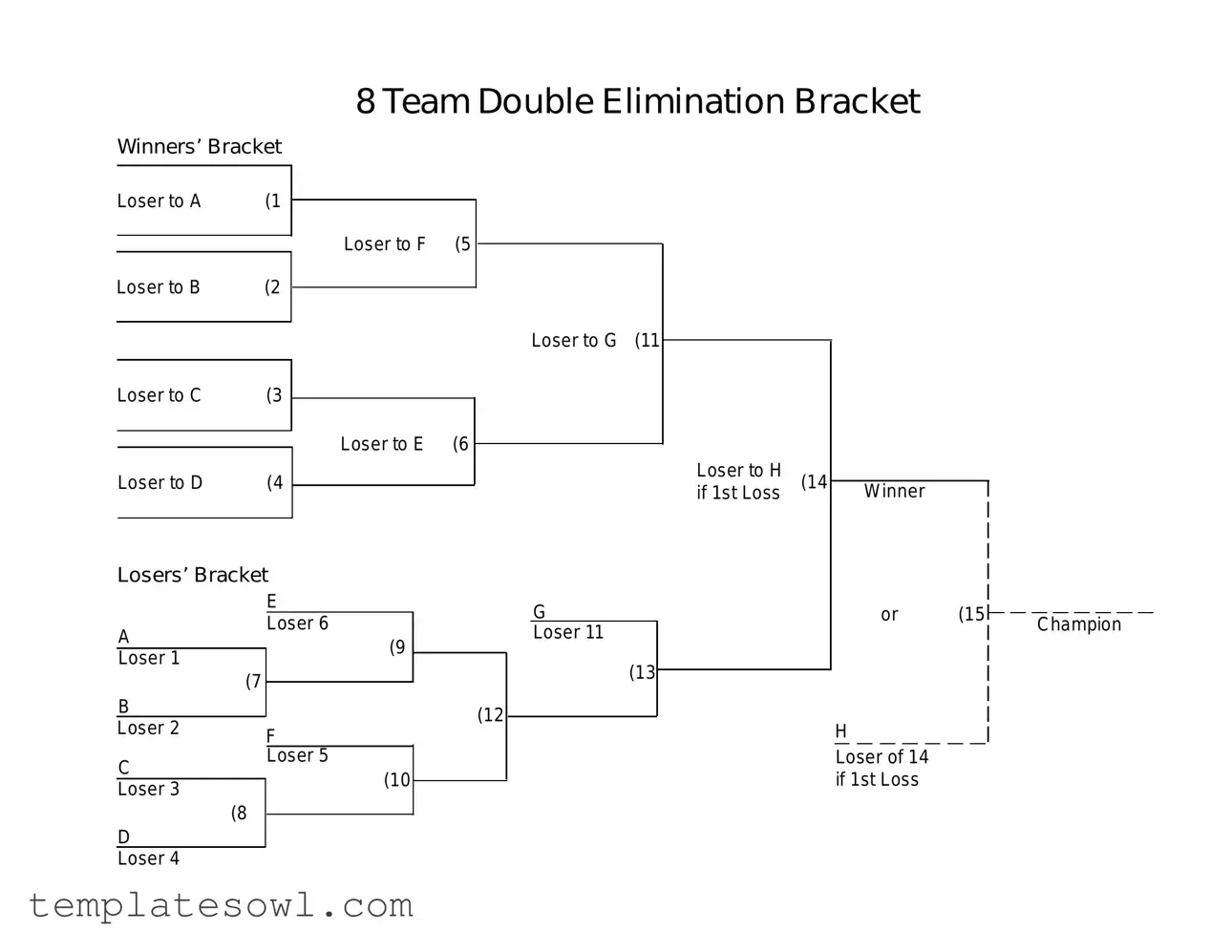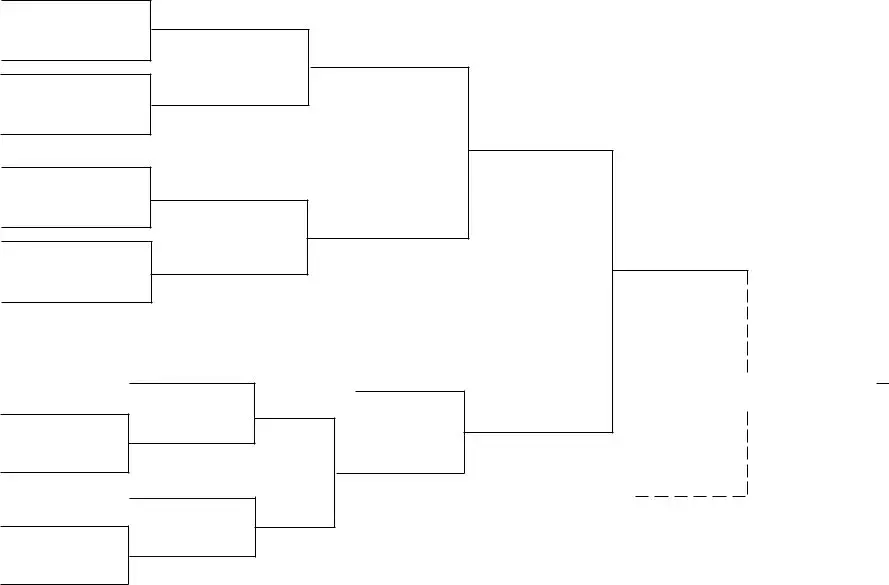What is the purpose of the Bracket Elimination Teams form?
The Bracket Elimination Teams form is designed to organize and manage a double elimination tournament involving eight teams. This format allows teams to have a second chance after losing a match, providing a fair opportunity for competitors to advance. The structure includes both a winners' bracket and a losers' bracket, ensuring that each team can compete even after a loss.
How does the double elimination format work?
In a double elimination tournament, each team must lose twice before being eliminated from the competition. Initially, all teams compete in the winners' bracket. If a team loses, they drop into the losers' bracket, where they must win every remaining match to stay in the tournament. This format rewards teams that perform well, while still giving those with an early loss a chance to come back and win the championship.
What is the difference between the winners' bracket and the losers' bracket?
The winners' bracket includes teams that have not lost a match. Winning teams continue to advance through this bracket. In contrast, the losers' bracket consists of teams that have lost once. They must compete against other losing teams, fighting to avoid elimination. The ultimate goal for teams in the losers' bracket is to win their matches and face the winner of the winners' bracket for a chance to claim the championship.
How are matchups determined in the Bracket Elimination Teams form?
Matchups in the Bracket Elimination Teams form follow a predetermined structure. Each team is assigned a position in the bracket based on their initial seeding, which may be determined by previous performance or random selection. As matches are completed, the winners progress to the next round in their respective brackets, while losing teams drop down to the losers' bracket as outlined in the form.
Can a team still win the tournament after losing a match?
Yes, a team can still win the tournament after suffering a loss. If a team loses in the winners' bracket, they drop to the losers' bracket but remain in contention. As they navigate through the losers' bracket, they must win each subsequent match. Should they successfully defeat the winner of the winners' bracket in the final match, they can claim the championship, highlighting the resilience and competitive spirit of the tournament format.

